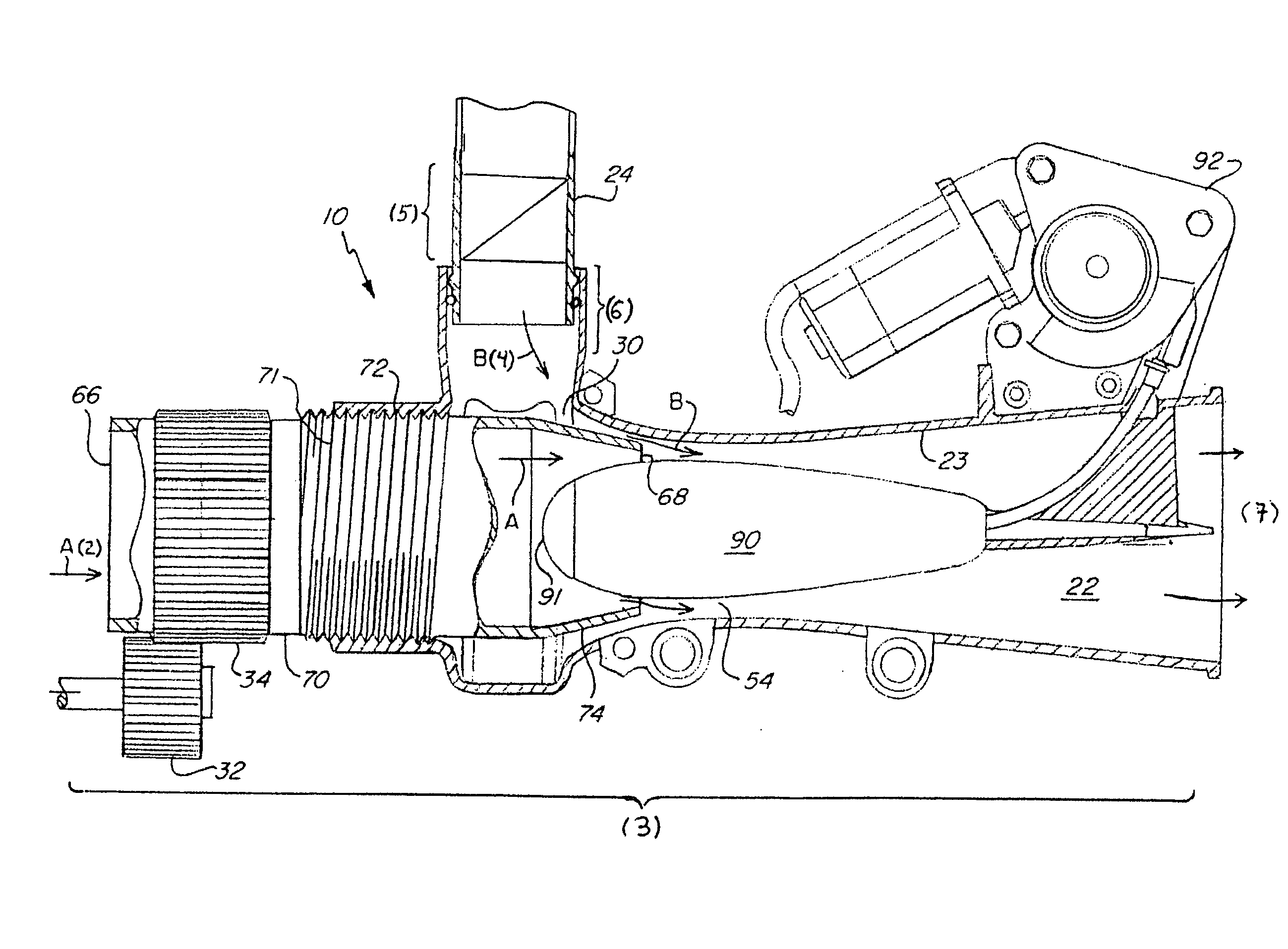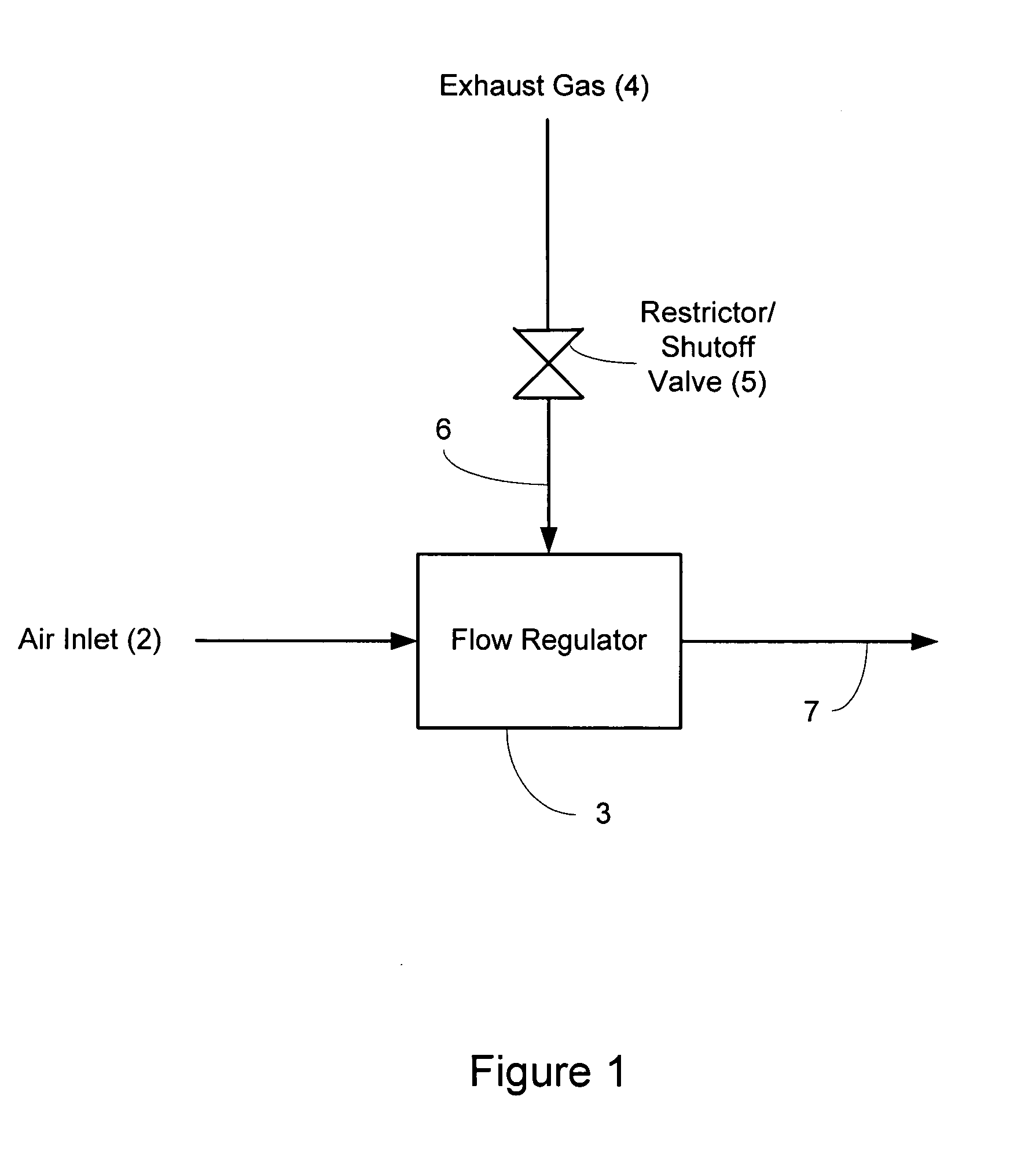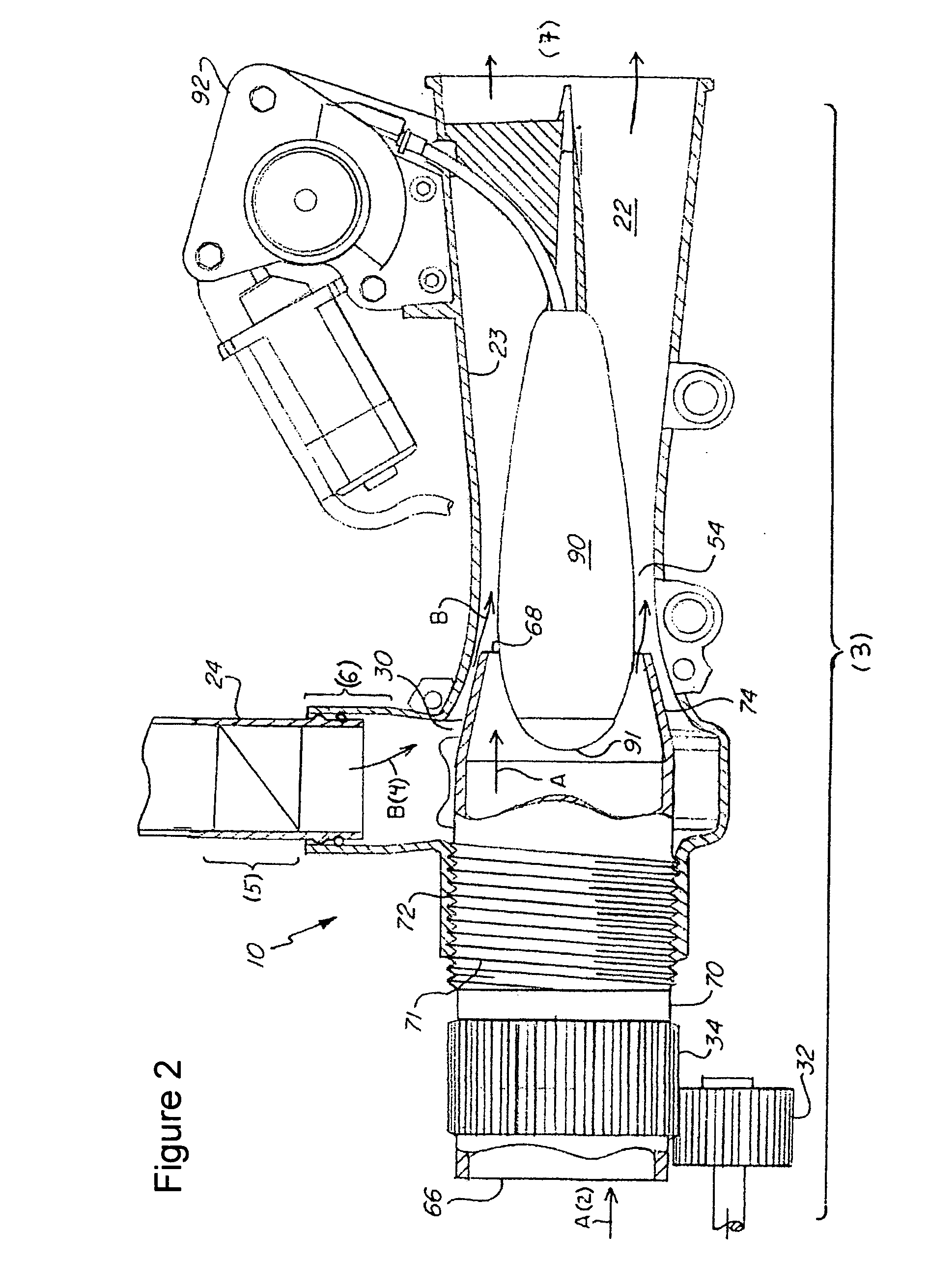Sequential control valve
a control valve and valve body technology, applied in the direction of engine operation, non-fuel substance addition to fuel, exhaust gas recirculation, etc., can solve the problems of less efficient turbocharger system, reduced engine gas exchange efficiency, and increased spool up time, so as to improve the efficiency of the engine and reduce the cost of manufacture , the effect of simplifying the control circui
- Summary
- Abstract
- Description
- Claims
- Application Information
AI Technical Summary
Benefits of technology
Problems solved by technology
Method used
Image
Examples
Embodiment Construction
[0032] Referring now to the drawings, wherein like reference numerals designate corresponding structure throughout the views.
[0033] Referring now to FIG. 1, system 10 is illustrated. In FIG. 1, air inlet 2 is illustrated as coupled to flow regulator 3. Exhaust gas input 4 is fluidly coupled to restrictor / shutoff valve 5, which is also fluidly coupled 6 to flow regulator 3. Flow regulator 3 then receives both air inlet 2 and exhaust gas input 4 and outputs fluid flow 7 to. In this advantageous embodiment, flow regulator 3 operates in tandem with restrictor / shutoff valve 5 to variably control the flow of both air inlet 2 and exhaust gas input 4. For example, restrictor / shutoff valve 5 may be variably actuated to open / close so as to limit exhaust air flow to flow regulator 3.
[0034] In this particular embodiment, restrictor / shutoff valve 5 for the EGR system that is positioned upstream in the exhaust recirculation piping from flow regulator 3, so as to provide a stepwise control strat...
PUM
 Login to View More
Login to View More Abstract
Description
Claims
Application Information
 Login to View More
Login to View More - R&D
- Intellectual Property
- Life Sciences
- Materials
- Tech Scout
- Unparalleled Data Quality
- Higher Quality Content
- 60% Fewer Hallucinations
Browse by: Latest US Patents, China's latest patents, Technical Efficacy Thesaurus, Application Domain, Technology Topic, Popular Technical Reports.
© 2025 PatSnap. All rights reserved.Legal|Privacy policy|Modern Slavery Act Transparency Statement|Sitemap|About US| Contact US: help@patsnap.com



